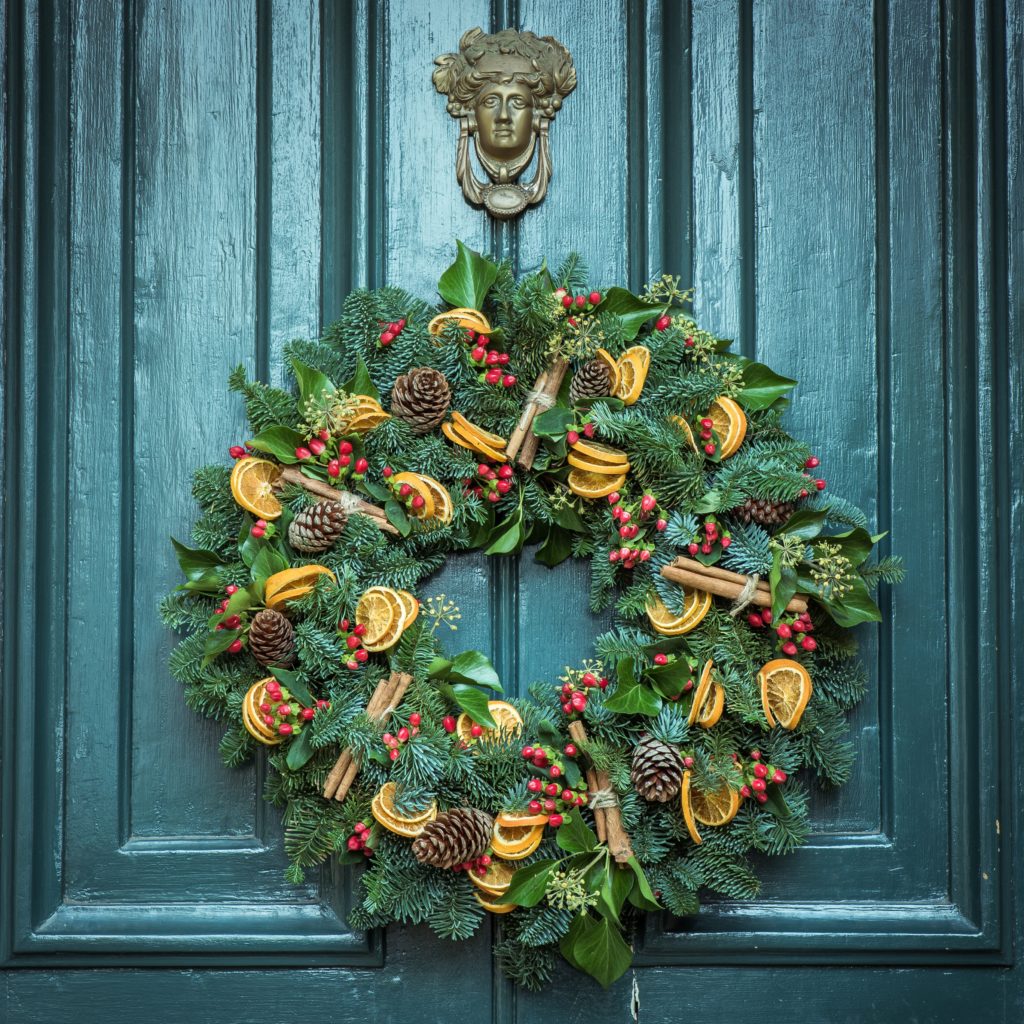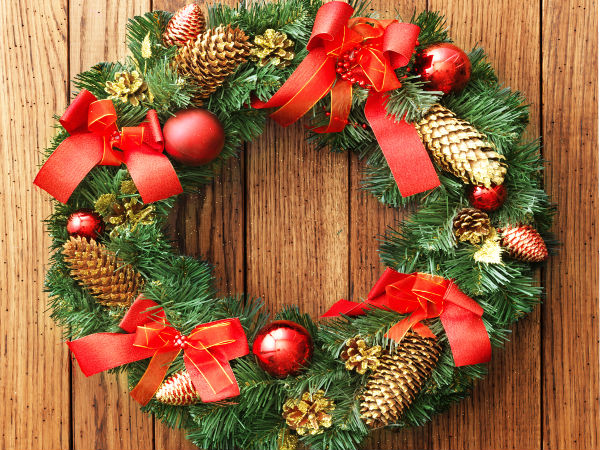A Circle Of Tradition: Exploring The History And Meaning Of The Christmas Wreath
A Circle of Tradition: Exploring the History and Meaning of the Christmas Wreath
Related Articles: A Circle of Tradition: Exploring the History and Meaning of the Christmas Wreath
Introduction
With great pleasure, we will explore the intriguing topic related to A Circle of Tradition: Exploring the History and Meaning of the Christmas Wreath. Let’s weave interesting information and offer fresh perspectives to the readers.
Table of Content
A Circle of Tradition: Exploring the History and Meaning of the Christmas Wreath

The Christmas wreath, a circular adornment of evergreen boughs, berries, and festive accents, is a ubiquitous symbol of the holiday season. Its presence graces doorways, windows, and tables, evoking a sense of warmth, celebration, and enduring tradition. But beyond its aesthetic appeal, the Christmas wreath carries a rich history and symbolism, rooted in ancient customs and Christian beliefs.
Ancient Origins: A Celebration of Life and Light
The practice of decorating with evergreen foliage during winter dates back to ancient times, predating the Christian era. In many cultures, evergreen trees and plants were viewed as symbols of life and resilience, representing the triumph of life over the darkness of winter. The Romans, for instance, celebrated the Saturnalia festival in December, adorning their homes with evergreen boughs to honor Saturn, the god of agriculture.
In northern Europe, evergreen wreaths were used in pagan rituals celebrating the winter solstice, the shortest day of the year. These wreaths, often adorned with candles, represented the return of the sun and the promise of new life. The circular shape of the wreath itself symbolized the cyclical nature of life and the eternal cycle of the seasons.
The Christian Connection: A Symbol of Hope and Eternity
With the advent of Christianity, the symbolism of the evergreen wreath evolved to reflect Christian beliefs. The circle, representing eternity, became associated with the unending love and sacrifice of Jesus Christ. The evergreen boughs, symbolizing eternal life, represented the promise of resurrection and the hope of salvation.
The use of candles within the wreath, particularly the four candles representing the four Sundays of Advent, further reinforced the Christian symbolism. The candles, symbolizing light in the darkness, represented the anticipation of Christ’s birth and the coming of the light of salvation.
Evolution and Adaptation: A Global Tradition
Over time, the Christmas wreath tradition spread across the globe, adapting to local customs and traditions. In Germany, for example, the Advent wreath became a popular tradition, with each candle representing a different aspect of the Advent season. In Scandinavia, wreaths are often adorned with candles and cinnamon sticks, creating a warm and inviting atmosphere.
In the United States, the Christmas wreath became a popular decorative element in the 19th century, with its popularity increasing in the 20th century. Today, wreaths are available in a wide variety of styles and materials, from traditional evergreen wreaths to modern designs incorporating ribbons, ornaments, and even LED lights.
Beyond Decoration: The Significance of the Wreath
The Christmas wreath, beyond its aesthetic appeal, serves as a powerful symbol of hope, joy, and resilience during the holiday season. It reminds us of the enduring spirit of life, the promise of renewal, and the importance of celebrating the traditions that bind us together.
FAQs about Christmas Wreath Tradition:
1. What is the historical significance of the Christmas wreath?
The Christmas wreath’s roots lie in ancient pagan traditions where evergreen foliage symbolized life and resilience during the winter solstice. With the advent of Christianity, its symbolism evolved to represent eternal life, hope, and the promise of salvation.
2. What are the different types of Christmas wreaths?
Christmas wreaths come in a variety of styles, including traditional evergreen wreaths made of pine, fir, or cedar, as well as wreaths crafted from materials like grapevine, willow, or even wire. They can be adorned with various decorations like berries, ribbons, ornaments, and candles.
3. What is the meaning of the four candles on an Advent wreath?
The four candles on an Advent wreath represent the four Sundays of Advent, each candle symbolizing a different aspect of the season: hope, peace, joy, and love.
4. Is there a specific way to hang a Christmas wreath?
Traditionally, Christmas wreaths are hung on the front door, symbolizing welcoming and hospitality. However, they can also be placed on windows, mantles, or even used as table centerpieces.
5. What are some tips for making a Christmas wreath?
Creating a Christmas wreath can be a fun and rewarding activity. Start with a base of evergreen boughs, and then add decorations like berries, ribbons, ornaments, and pine cones. Secure the decorations with wire or floral tape.
Tips for Making a Christmas Wreath:
- Choose the right base: Select a wreath base that fits your desired size and style. Evergreen boughs, grapevine, or willow are popular choices.
- Gather your materials: Choose decorations that complement your wreath base and reflect your personal style. Consider using natural elements like berries, pinecones, and cinnamon sticks, or incorporating festive ornaments and ribbons.
- Secure decorations with wire or floral tape: Use wire or floral tape to attach decorations to the wreath base, ensuring they are securely held in place.
- Add a finishing touch: Consider adding a bow, a personalized ornament, or a festive sign to complete your wreath.
Conclusion:
The Christmas wreath, with its rich history and enduring symbolism, remains a cherished tradition during the holiday season. From its ancient origins as a celebration of life and light to its Christian association with hope and eternity, the wreath continues to evoke a sense of warmth, tradition, and festive spirit. As we adorn our homes with these circular symbols of joy and resilience, we celebrate the enduring power of tradition and the timeless values they represent.








Closure
Thus, we hope this article has provided valuable insights into A Circle of Tradition: Exploring the History and Meaning of the Christmas Wreath. We hope you find this article informative and beneficial. See you in our next article!
Leave a Reply